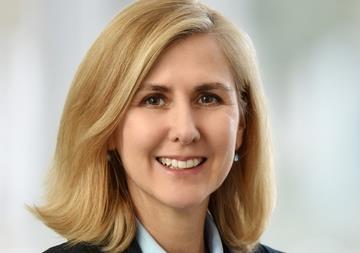In the face of it, things are looking up for the development of cross-border pensions. Two years after IORP (the Institutions For Occupational Retirement Provision Directive), the single passport principle for pan-European pensions, was introduced, nine cross-border arrangements have been concluded, according to the Committee of European Insurance and Occupational Pension Supervisors (CEIOPS).
The largest was for a Luxembourg-based arrangement, which receives contributions from the UK, Netherlands, Germany, France, Poland, Austria, Belgium, Italy, Spain, and Sweden. Altogether there are some 48 cross-border arrangements, most of them established before the IORP directive came into force in September 2005.
Under the IORP directive, a company can choose a European member state in which to base a pension fund; the legal structure of that fund is then based in that "home" country. The regulations of that country will lay down the financial elements of the fund, and other issues such as corporate governance and prudential matters.
The directive has also introduced minimum prudential standards for a cross-border pension fund, and legislates against discrimination against foreign service providers, allowing a fund to elect any service provider authorised to operate in a member state.
It has taken two years, but Europe is now fully compliant with the directive. As a result, many initiatives have emerged, particularly in asset pooling. Tax hurdles are being eliminated. In September, Northern Trust became the first custodian to be able to secure reduced withholding tax rates for investors holding Italian equities through a tax transparent cross-border pooling vehicle. Northern Trust says the reductions, in respect of dividend income arising from investing in Italian stocks, could increase total return for investors in Italian equities via such vehicles by more than 40 basis points a year.
"There are new ideas being implemented, but they have got legs," says Aaron Overy, pooling business development manager at Northern Trust's asset servicing sales team.
Northern Trust provides custody and fund administration services to Univest, the pension asset pooling vehicle launched by Unilever two years ago. The fund was seeded with more than €2bn at launch and now runs assets of more than €4bn.
Northern Trust, meanwhile, has more than doubled assets under custody in cross-border pooling vehicles in the past year to $24bn (€17bn). "The people we are talking to are multinationals that are looking to set up pan-European pension plans. They see the obvious administrative efficiencies they can gain," Overy says.
Mercer Human Resources Consulting also identifies benefits. Asset pooling could bring on a lower asset management charge, which, for a global equity fund, would be in the range of 10-20 basis points. Mercer says that pooling will give smaller pension funds access to high-quality, specialist asset managers, and that there will be an improved governance and risk management process by having aggregated funds and more direct control.
It is no surprise, then, that one in four of large European company pension funds are thinking about introducing some type of pan-European pension plan within the next ten years, according to research from consultants Towers Perrin. Towers Perrin surveyed 323 large companies in France, Germany, the Netherlands, Spain, and the UK. It concluded: "companies are beginning to consider that, instead of implementing a full and complicated pan-European pension fund, they could still gain from combining aspects, such as asset pooling, certain types of plans for some countries, or for certain groups of employees."
As a result, providers are showing interest. Allianz Global Investors, for example, has launched the Allianz European Pension product. This was initially offered in France and Germany, but has now been rolled out. Thomas Groffmann, head of European pensions at Allianz SE, says: "Our European product line has been rolled out to six countries and is based on local pension vehicles, but with innovative European elements, such as a standardised European investment concept and European reporting."
Allianz still faces obstacles, notably different social labour and tax laws, and the product has to allow for different national legislatures. Yet it believes that, in the current legal framework, its product is a significant step forward.
"I think we will see developments from a number of potential providers to capitalise on what ultimately is a potentially lucrative market, but with some challenges in it," says Chris Mayo, senior investment consultant at Watson Wyatt. He believes most multinationals will look to develop a multi-plan in two or three places, rather than across Europe.
Northern Trust's Overy agrees. "There are the pan-European plans which were established before the IORP directive came into place, and those are things like a UK-Ireland arrangement. What we're talking about is the dream of having contributions from a variety of member states in one place, and that's more challenging."
One thing that will help is the development of frameworks that support pan-European pensions in various countries. Last year Belgium created a legal entity to embrace all pension funds - the Organisme de Financement de Pensions (OFP), which includes liabilities as well as assets. Whatever the location of the funds, whether domestic or cross-border, they would be covered by one pensions entity, while Belgium itself moves onto an EET (exempt-exempt-taxed) basis.
The Netherlands, which has been highly critical of Belgium's new entity, has also set itself up as a hub for cross-border provision. In March 2006, the finance ministry issued a decree that set out its commitment to promote the country as the preferred location for cross-border asset pooling.
In particular, the decree endorsed a tax-transparent asset pooling vehicle for the Netherlands, the Fund for Joint Account (FGR), a competitor with the CCF structure in Ireland, the FCP structure in Luxembourg, and the PFPV structure in the UK.
Luxembourg also made a pitch for cross-border business when, three years ago, it abolished its 0.01% subscription tax for multinational corporations that wanted to establish cross-border pooling investment vehicles for their pension assets.
In terms of the vehicles themselves, the CCF and FCP are both highly regulated, compared with the FGR's lighter touch regime. FGRs, when used by institutional investors, are not regulated. However, as a non-regulated vehicle, it is not possible to implement a UCITS III FGR. In contrast, CCF and FCP do have a UCITS III provision. Observers say a review of the potential cross-liability issues needs to be actively considered for the FGR. For the CCF and FCP, this is managed through the regulations governing these vehicles.
Currently, tax transparency rulings in multiple countries of an investor have been achieved through the CCF and FCP. For the FGR, these are still being applied for, say experts.
Various domiciles want to be the leader in what they see as a market with huge potential. Steve Delo, chief executive of the UK's Pensions Management Institute, believes the UK should be the natural hub for cross-border activity. "London has rapidly become the financial services centre of Europe and its success is envied by other European powers," he says. "I suspect this tension could prove an issue with pan-European pensions. After all, the natural place to design and manage such schemes is London and the UK but I suspect our European partners will resist this ‘gravitational pull'."
Yvonne Sonsino, principal at Mercer, disagrees: "Competition is fierce and every country is pitching itself as the preferred state. Each jurisdiction would argue that it is the centre of excellence. London has a lot of technical capabilities, but there is a lot of expertise elsewhere."
Sceptics argue that many obstacles still need to be overcome. Georg Inderst, an independent consultant, says: "I'm a bit sceptical about the future of pan-European pension funds. After we had the financial crisis of 2000, every country reformed its pension system. And when you look at the most important things, like funding regulations, they are all very different. Various countries have somehow agreed on the pension directive but, given the local problems on the ground, each country has gone for a different solution."
Mercer points out that the level of state benefits varies widely from one country to another. In a number of countries there are significant unfunded pensions' promises as well. For example, about 40% of all pension liabilities in Germany are unfunded.
Funding is clearly a significant issue. A report commissioned by Allianz Global Investors and compiled by Germany's Risk Lab shows that the valuation and risk characteristics of defined benefit liabilities under national regulation vary significantly across OECD countries. This has a direct impact on the asset portfolio. For example, even for identical pension plans there is no uniform optimal liability-driven investment strategy in different countries.
Gerhard Scheuenstuhl, managing director of Risk Lab, and compiler of the report, says he was surprised by the extent that funding was an issue. "One hundred percent funding of a plan in one country could be underfunded by 40% with the same amount of plan assets in one country and vice-versa," he says. "So the question of what gets accounted for and how liabilities are valued is different in each system."
He also points out that regulatory compliance is not the only issue. "Once you are funded to a reasonable extent from a regulatory point of view, you might get in trouble with the accounting world, for example with IAS 19, because the different ways of measuring liabilities imply that the risk characteristics of each fund would be different. So even with an identical idea of strategies, you might end up with a different investment concept."
Differences on tax and benefits are also an important issue, says Bernard Casey, senior research fellow at the faculty of finance at Cass Business School in the UK. "There is still the question of how your contributions are dealt with in your home tax authority and the benefits you draw from your home tax authority," he says. "The problem here is that why might any one government effectively forgo the rights to tax people in its own country when they are receiving income, especially if that country gave tax credits to someone to put money into the pension scheme in the first place." Casey believes that unless this issue is resolved, "all the rest of it is just froth on the surface."
For its part, the EIORP model of the European Federation of Retirement Provision (EFRP), which was further clarified by the IORP directive, states that no tax harmonisation is required. The EFRP claims its solution will ensure a member state retains effective fiscal control and its tax revenue.
The national section for a member state in which the EIORP is active is to be treated exactly as it if were an IORP. Tax neutrality is achieved by ensuring that the national section applies the tax rules of its corresponding member state. So members would join the national section of the member state in which their salaries are taxed.
Others see no answer to the problem. "We don't see any tax harmonisation coming, but you can overcome this, although it is hard work to do so," says Allianz's Groffmann. Not everyone is convinced that it is worth the hard work, however. Trevor Llanwarne, chief actuary for pensions at PricewaterhouseCoopers, says multinationals will have to think it through logically. "The biggest barrier is the business case. Are you just adding costs rather than saving costs, in the short term anyhow? If you try to put everything together under one governance regime you're going to have issues around languages, totally different IT platforms, and systems. And if all you do is treat it as if it wasn't pooled in the first place, why go through all the hassle?"
He believes multinationals can make savings by bringing together operations and through purchase power, without resorting to cross-border structures. He also says many multinationals will be put off by labour restrictions. "If having a pan-European plan meant dealing with works councils and unions, which made it almost impossible for me to make changes, I am never going to opt for such a plan."
Mercer's Sonsino dismisses this argument. "We're seeing a very large amount of demand. It's not all about cost, it's also about mobility," she insists, also pointing out that good governance and consistency are issues that are being taken very seriously among multinationals.
Most agree that many measures of the IORP directive are ambivalent, leaving too much room for confusion. Steffen Matthias, secretary general of the European Fund and Asset Management Association (EFAMA) says the directive will be reviewed next year. "IORP did not reach the goal to create a pan-European pension market or level playing field for pension products or retirement provision. This is not a part of the directive and, since it wasn't a goal, we cannot say the pension directive did not achieve what it set out to do. But it did not achieve the real goal," he says.
Meanwhile, CEIOPS is on the case, investigating how many interpretations of the directive are likely to emerge and "any obstacles for cross-border activities and the need for further convergence". Progress is being made, but there is still a long way to go. "It appears to be moving forward, but slowly and stumblingly," says Cass's Casey.












No comments yet